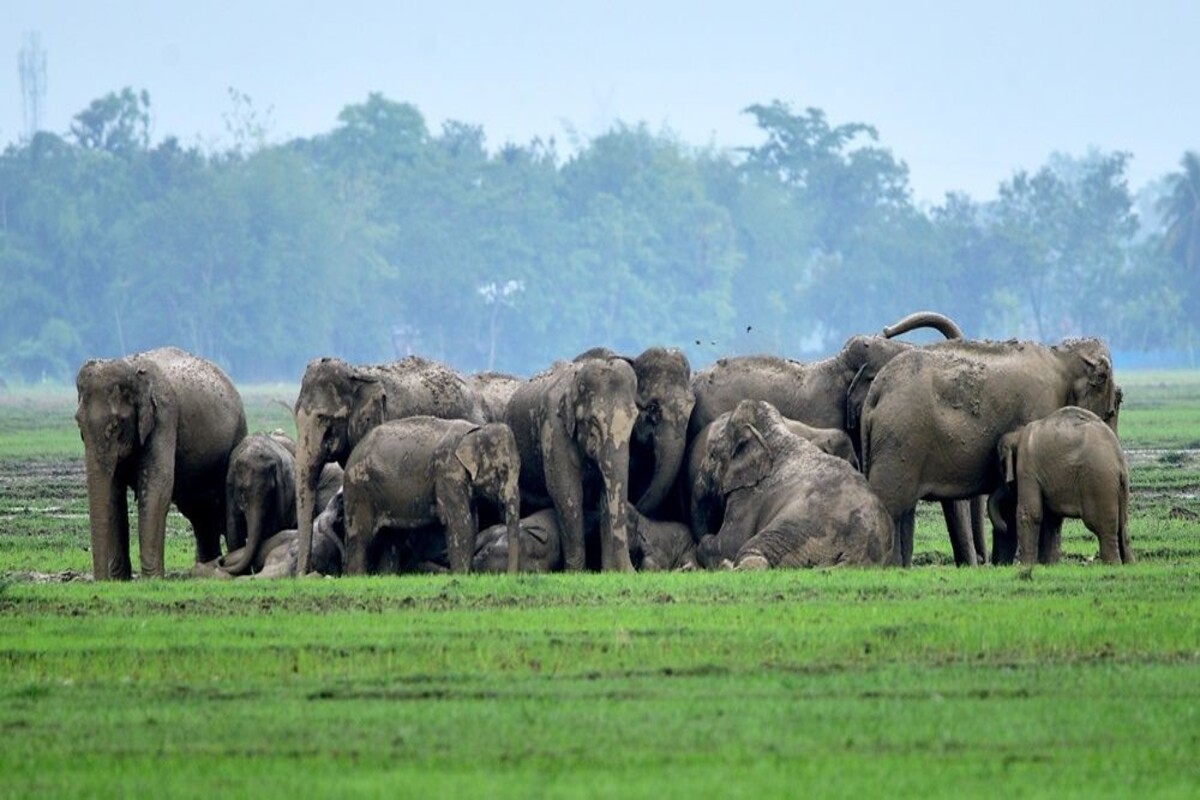In the wake of habitat loss, relentless conflict with humans and a host of unnatural reasons, mainly electrocution, Odisha has now turned into a graveyard of elephants, pointed out conservationists on Monday with three elephants electrocuted in Sambalpur district. `
Of the multiplicity of unnatural reasons like poaching, electrocution, train & road kills and even falling into open wells, electrocution stays at the top of the leading causes for unnatural deaths.
Advertisement
The forest department’s priority is now plantations and tourism. Hence, elephant protection has taken a total backseat, conservationist Biswajit Mohanty, secretary of Wildlife Society of Orissa pointed out.
Since 2014-15, the State has lost 154 elephants due to electrocution, of which 103 fatalities were due to live poaching or fencing.
Angul and Dhenkanal districts have emerged as a hotspot for electrocution which lost five elephants in September, 2017 in a horrifying incident near Meramundali when a sagging 11kv wire touched a herd.
From 2010 onwards, despite some preventive steps taken by the government, including allocation of adequate funds for strengthening of power lines, the electrocution death rates have not come down. From 1 April 2000 to 21 August 2018 (18 years, the state has lost 90 elephants to electrocution, averaging nearly 11 elephants in a year.
Live wire poaching traps, sagging overhead lines and electrified fences result in the electrocution of elephants in Odisha.
In 2010 the Ministry of Environment, Forest and Climate Change (MOEFCC) had set up a four-member inquiry committee to investigate electrocution deaths of elephants and recommend steps to prevent them. Most of the recommendations of the committee are yet to be implemented for the past 14 years while elephants continued to be slaughtered in the state by electrocution.
The Distcoms (power distributors) violate Central Electricity Authority (CEA) guidelines for laying and maintenance of 11/33 KV transmission/distribution lines in areas critical for wildlife. Rule 77 is violated which provides minimum ground clearance for conductors at various places like across streets, along streets and other places at a minimum of 4.6 metres. No Earth Leakage Circuit breaker (ELCBs) to disconnect the supply instantly on occurrence of earth fault and no safety fuse or isolated lines either. This was an important recommendation of the four- member expert MoeFCC committee in 2010.
Most transformers are exposed without barricades which allow poachers free and easy access to the points for hooking the live wire traps.
RTI information about inspection of power lines for the period from 1st April’2011 to 15th December’2016 (nearly six years) obtained on 4 February 2017 revealed no inspections of power lines. Hence, the safety of the distribution network is questionable.
Not a single Discom official has been convicted and jailed under Wildlife (Protection) Act, 1972 despite death of more than 154 elephants by electrocution in the last ten years/No action against senior officers for dereliction of duties since only the forest guard or watcher is suspended . No DFO or Range Officer has been dismissed for utter failure to save elephants from poaching by electrocution despite a clear circular by the government issued in 2011 which laid down the process for inquiry in case of every unnatural elephant death.











